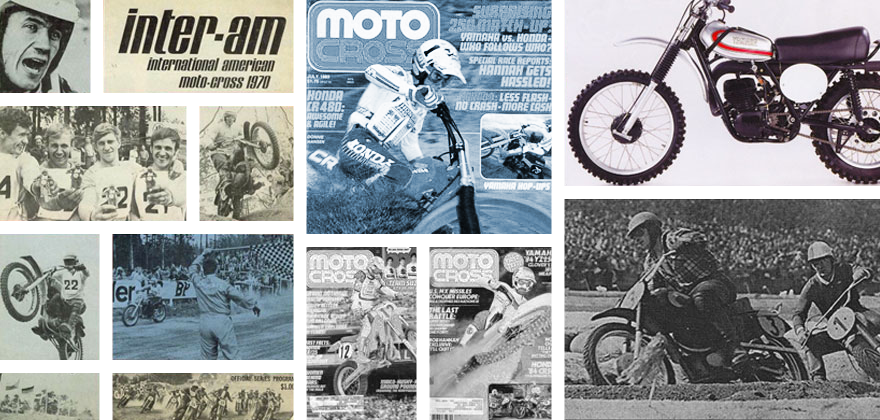
For this edition of Classic Steel, we are going to take a look back at Suzuki’s all-new RM80 for 1986.
 All-new for 1986, Suzuki’s RM80 grew in size, power, and performance. Photo Credit: Suzuki
All-new for 1986, Suzuki’s RM80 grew in size, power, and performance. Photo Credit: Suzuki
The 1986 season was a year of significant change for Suzuki. After dominating suspension performance in the early 80s with their revolutionary Full Floater rear suspension, legal entanglements would force Suzuki to retire the original Full Floater in 1986. This would result in a complete revamp of the entire RM lineup. The 80, 125, and 250 were redesigned from the ground up with all-new frames, updated motors, and completely reengineered rear suspension systems.
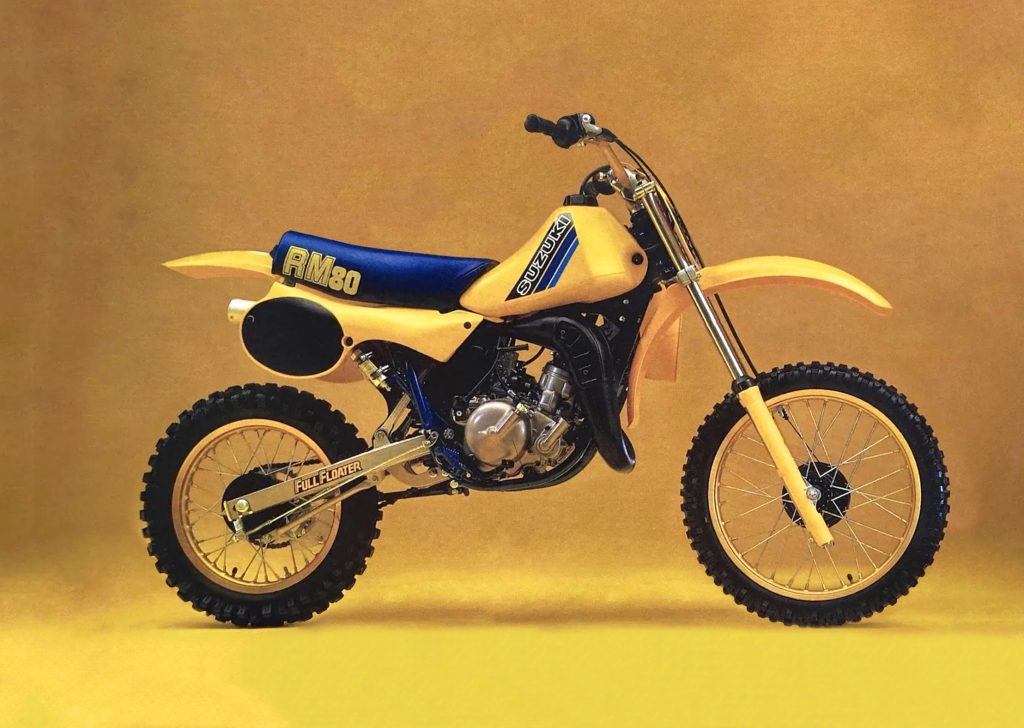
In 1985, Suzuki’s RM80 was underpowered, undersized, and so far behind the competition that two of the three major motocross magazines did not even bother to include it in their mini shootouts. Photo Credit: Suzuki
In the case of Suzuki’s smallest RM, this redesign was well overdue. Last revamped in 1983, the RM80 had started as a very competitive mini racer, but by 1985, its competition was leaving the mini yellow zonker in their dust. The RM was a nice fit for smaller and less experienced riders, but its diminutive size and relative lack of power made it a hard sell to larger and faster kids. In 1985, Dirt Bike and Dirt Rider did not even include the RM80 in their shootouts, deeming the unchanged Suzuki mini incapable of beating the newer contenders.
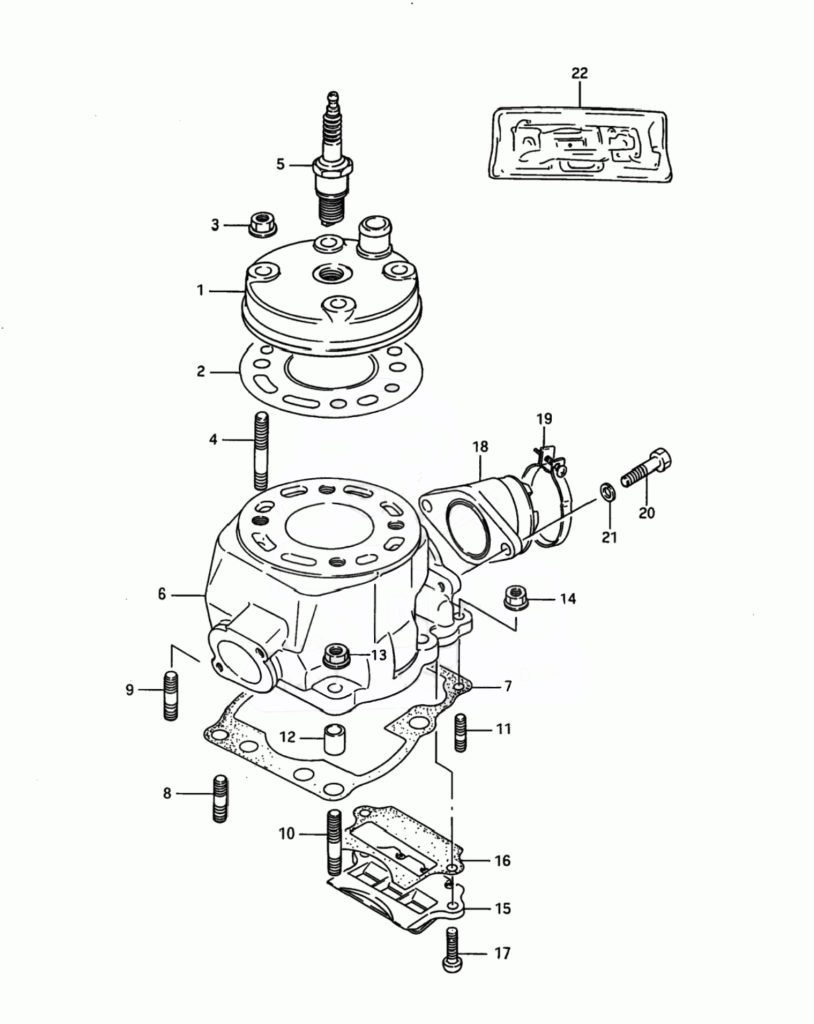
An all-new motor for 1986 moved to a longer-stroke configuration for increased torque. The new motor eschewed any sort of variable exhaust “power valve” and continued to employ Suzuki’s unique semi-case-reed “Power Reed” intake. Photo Credit: Suzuki
With a clean slate for 1986, Suzuki looked to update and upgrade every facet of their smallest RM’s performance. First up was an all-new frame that upsized the RM’s dimensions considerably. The new frame was larger overall with a double downtube full cradle design that featured large oval tubes for strength. The new chassis increased the RM’s wheelbase by 0.2 inches, increased seat height by 1.6 inches, and added 1.4 inches of additional ground clearance. A new front disc aided stopping and all-new suspension front and rear boosted travel by 0.8 inches. In one season the RM went from one of the smallest machines in the class to the largest.
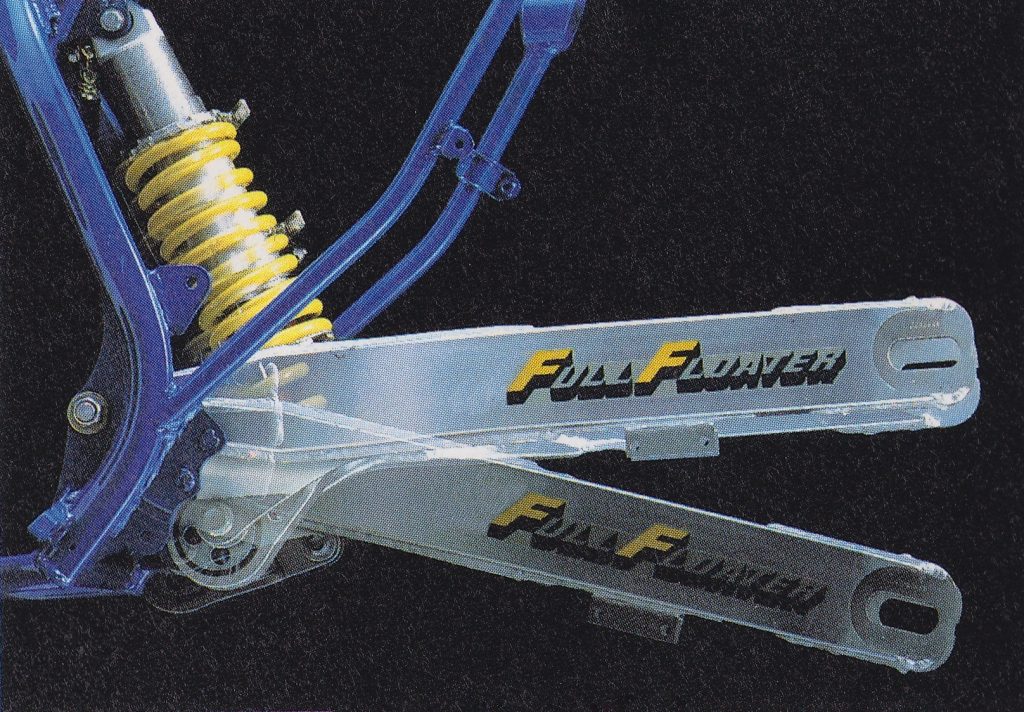 The most notable change on the RM80 for 1986 was the move away from Suzuki’s original Full Floater design. The revamped linkage did away with the large pull rods and links of the original design and replaced them with a smaller and more compact bottom-link configuration that relied on an eccentric cam to provide its rising rate. Photo Credit: Suzuki
The most notable change on the RM80 for 1986 was the move away from Suzuki’s original Full Floater design. The revamped linkage did away with the large pull rods and links of the original design and replaced them with a smaller and more compact bottom-link configuration that relied on an eccentric cam to provide its rising rate. Photo Credit: Suzuki
Up front, the RM’s new Showa air/oil forks moved from 9.8 inches of travel in 1985 to a full 10.4 inches in 1986. The diameter of the sliders was also increased from the ’85 model’s flexy 30mm to a much more robust 33mm. This brought the RM’s front end in line with the silverware found on the CR and YZ in 1986. Kawasaki, however, still held an edge in fork diameter, moving to a larger set of 35mm forks on their all-new green mini for ’86. Even though the RM’s forks were larger, they remained rudimentary even by 1986 standards. Their internal damping lacked any sort of external adjustments for compression or rebound damping with a Shrader air valve on each fork cap being the sole way to easily modify their performance.
 All-new bodywork for 1986 provided a thinner midsection, roomier layout, and flatter riding position. Photo Credit: Suzuki
All-new bodywork for 1986 provided a thinner midsection, roomier layout, and flatter riding position. Photo Credit: Suzuki
In the rear, the all-new RM80 made the most significant departure from the previous design by moving away from the well-regarded original Full Floater linkage. Originally introduced in 1982 on the RM80, the original Full Floater was remarkable in performance, but its large and complicated system of pull rods and linkages led to many packaging compromises. With the original Floater design, there was less room for the airbox and most of the heavy parts of the suspension system were carried high up on the chassis. Originally, this was not much of a concern as every manufacturer experimented with different ways to package their rear suspension linkage. By 1986, however, the industry had concluded that Honda’s “bottom link” design posed the fewest compromises in packaging and performance.
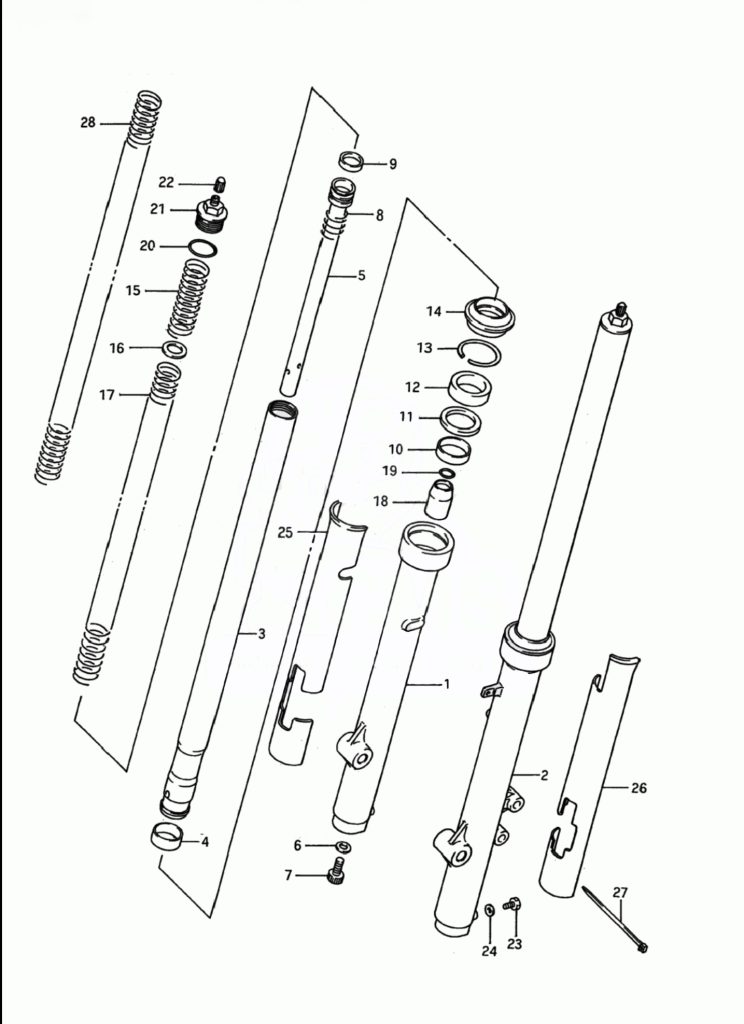
All-new air/oil adjustable Showa forks added 0.8 inches of travel and 3mm of diameter to their sliders for 1986. Photo Credit: Suzuki
In moving away from the original Full Floater design, Suzuki was able to mitigate further monetary damages if the ongoing lawsuit with Don Richardson (a former Suzuki partner and the inventor of the original Full Floater design) went against them, simplify production, improve weight distribution, and hopefully, performance. With a clean sheet for 1986, Suzuki’s engineers decided to put their spin on the proven Honda design. Like the Pro-Link, the new Full Floater moved the linkage components below the shock for optimal weight distribution. This meant the shock no longer “floated” between two linkage arms, but it did free up a good deal of real estate for the airbox and other components and moved much of the heavy stuff down low. Unlike the Pro-Link, however, the new Suzuki design relied on an “eccentric cam” to provide the variable rate to its linkage. The eccentric cam was crafted out of hardened steel and moved on two rows of needle bearings. The revamped Full Floater was even more compact and lighter than the series of bell crank linkages used on the Honda and Suzuki felt it was a superior solution.
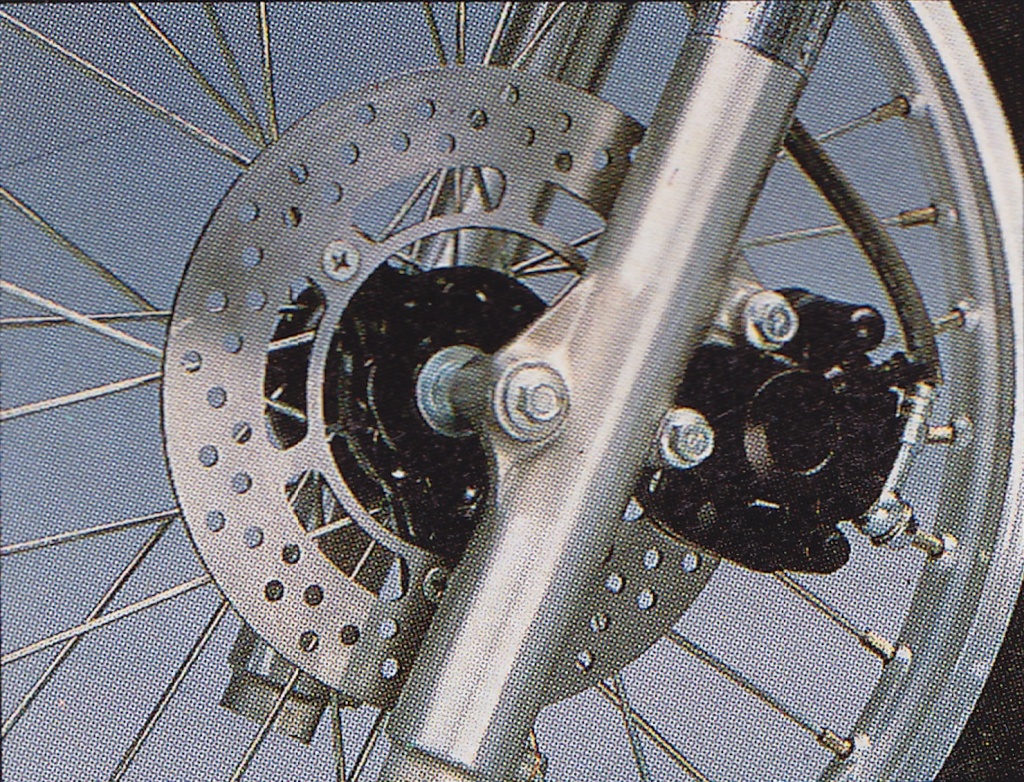 An all-new single-piston front disc binder increased the RM’s stopping power greatly. Photo Credit: Suzuki
An all-new single-piston front disc binder increased the RM’s stopping power greatly. Photo Credit: Suzuki
Aside from the new linkage, the RM’s rear suspension was very conventional for the mini class of the time. The new Showa remote reservoir damper delivered 10.4 inches of travel but once again lacked any external adjustments for compression or rebound damping. Spring preload was adjustable, but there was very little a rider could do to fine-tune its performance.
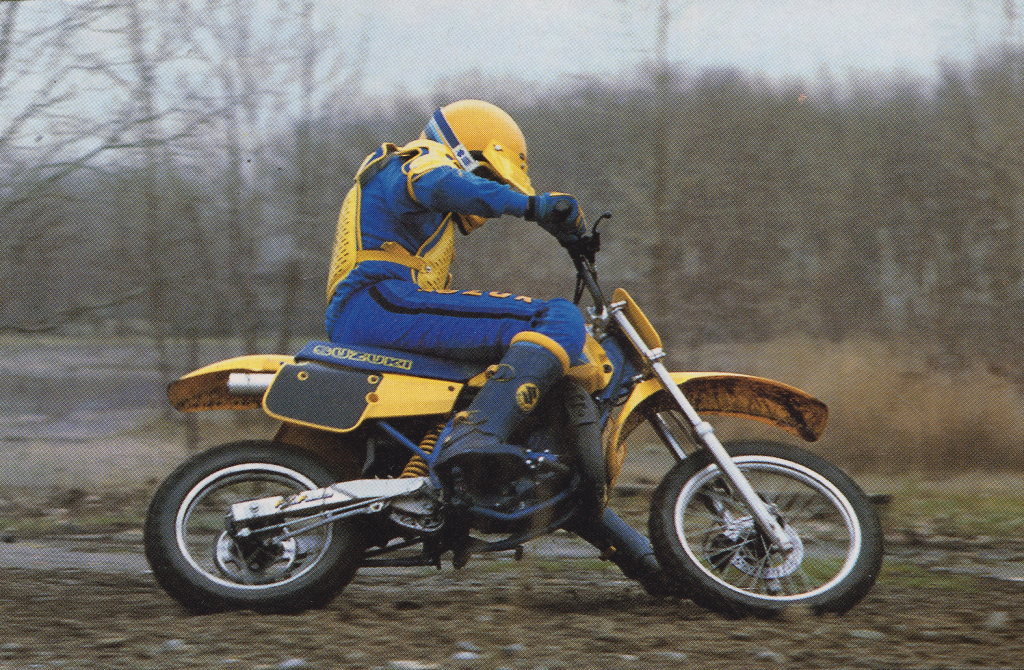 In the 1980s, the move was toward larger and larger minis allowing older and taller kids to stay on the pint-sized machines longer. In 1986, the RM moved from the smallest mini in the class to the largest. Photo Credit: Suzuki
In the 1980s, the move was toward larger and larger minis allowing older and taller kids to stay on the pint-sized machines longer. In 1986, the RM moved from the smallest mini in the class to the largest. Photo Credit: Suzuki
On the motor front, the Suzuki was majorly revamped in 1986. The new blue mill maintained the same 82cc of displacement as 1985 but featured all-new internal dimensions. In a play to get a bit more grunt out of their mini mill, Suzuki’s engineers increased the stroke of the tiny engine for 1986. Stroke was increased from 44.0 to 46.9mm and the bore was reduced from 49.0 to 47.5mm. All-new porting was added to the revamped cylinder and a new double-ring alloy piston was spec’d. Just as in 1985, the new motor lacked any sort of variable exhaust “power valve” to boost performance.
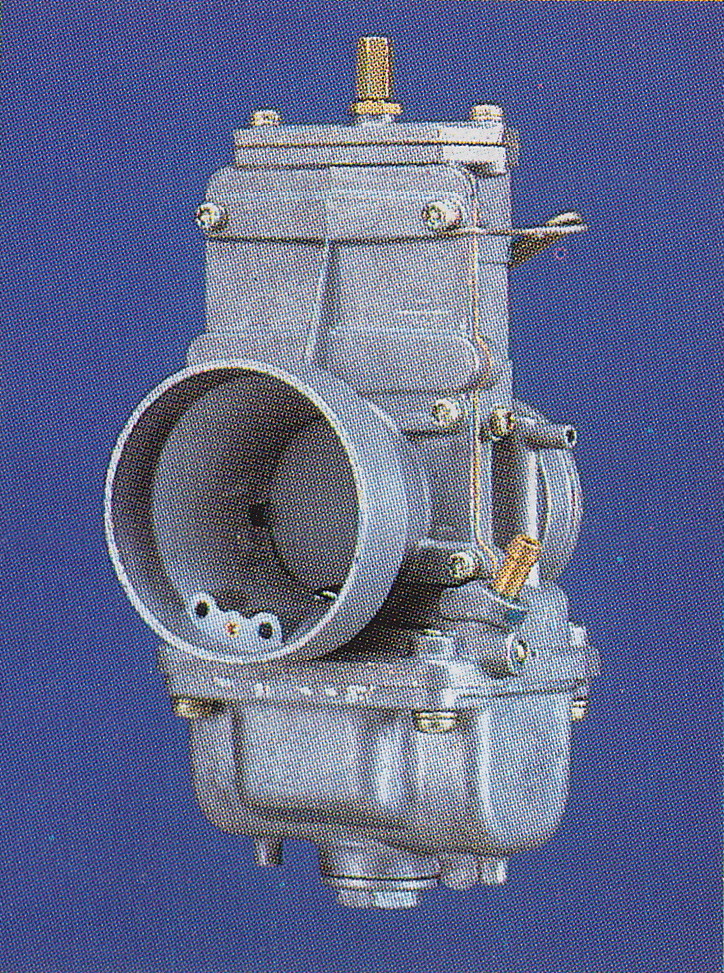 A larger 28mm Mikuni “flat slide” carburetor gave the RM80 the deep breathing it needed to run at the front in 1986. Photo Credit: Suzuki
A larger 28mm Mikuni “flat slide” carburetor gave the RM80 the deep breathing it needed to run at the front in 1986. Photo Credit: Suzuki
On the intake side, the new motor continued to employ Suzuki’s semi-case-reed “Power Reed” design in use on the RMs since 1976. In 1986, the Power Reed was updated by adding an additional reed pedal to the design to improve motor response. The RM once again relied on a flat-slide Mikuni carburetor for the mixing duties but the ’86 version was boosted in size by 2mm to 28mm. This, combined with a new larger airbox, provided the motor with deeper breathing for 1986. A new expansion chamber was tuned to work with the revised motor dimensions and a sano alloy silencer replaced the steel unit of 1985.
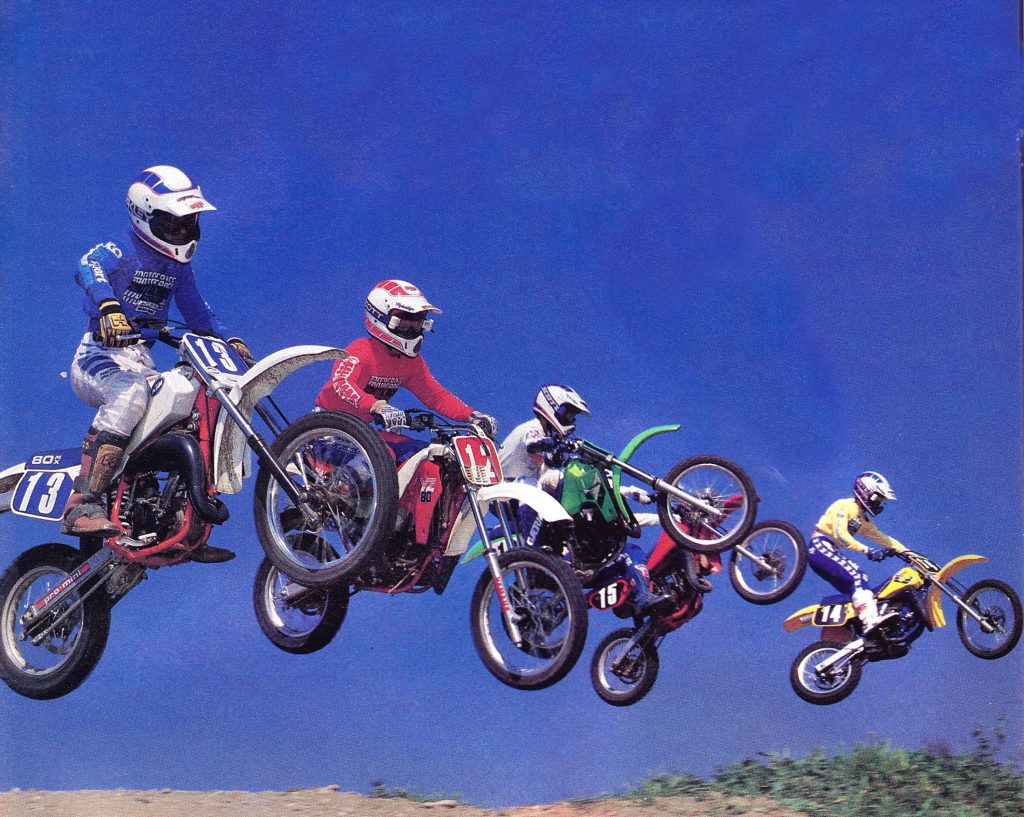 In 1986, the mini division was one of the most hotly contested classes in motocross. All-new machines from Suzuki, Kawasaki, Yamaha, and KTM did battle with a majorly revamped Honda for mini-class dominance. Photo Credit: Motocross Action
In 1986, the mini division was one of the most hotly contested classes in motocross. All-new machines from Suzuki, Kawasaki, Yamaha, and KTM did battle with a majorly revamped Honda for mini-class dominance. Photo Credit: Motocross Action
Paired with the all-new chassis was revised bodywork that opened the RM’s pilot’s compartment and updated its looks. The new bodywork ditched the 1981 aesthetics of the ’85 machine in favor of the new look introduced with the RM125 and RM250 in 1984. The revised layout featured a taller and flatter seat that flowed more naturally into the tank and larger side plates for numbers. The enlarged ergonomics made the RM an ideal fit for older kids looking to spend one more year on the minis before moving up. While the bodywork was far from cutting edge, the new look was handsome, and most people seemed to think the RM was an attractive machine with its yellow plastic, blue frame, and bright blue motor.
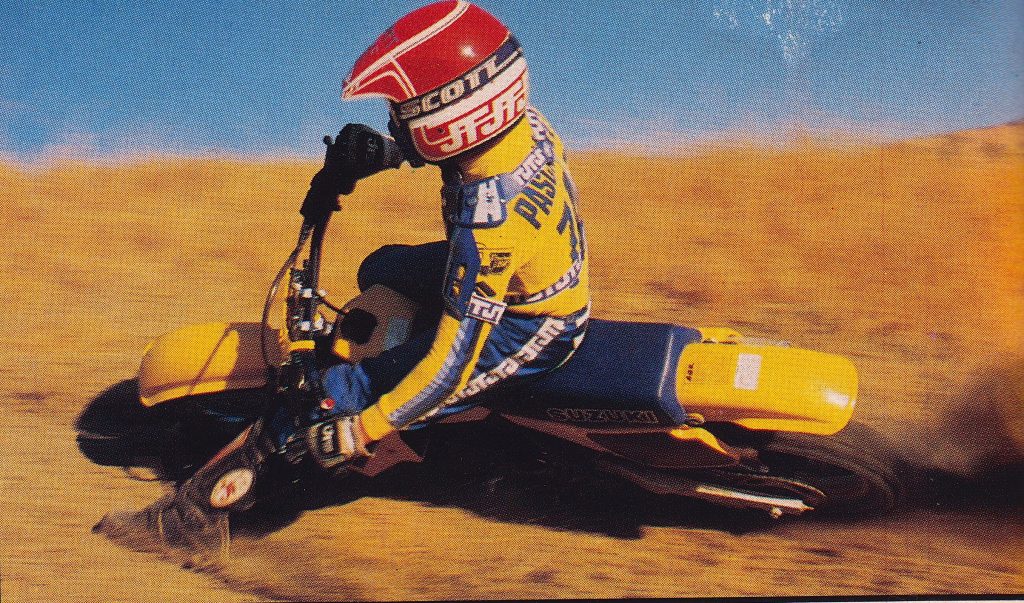 In 1986, one of the RM80’s greatest assets was its handling. The new chassis was sharp in the turns, confident at speed, and easily the best-handling machine in the Suzuki stable. Photo Credit: Dirt Rider
In 1986, one of the RM80’s greatest assets was its handling. The new chassis was sharp in the turns, confident at speed, and easily the best-handling machine in the Suzuki stable. Photo Credit: Dirt Rider
On the track, the 1986 RM80 proved to be a tremendous step forward for Suzuki. The new motor was very competitive with a potent midrange hit that many testers felt put the ’86 RM125 to shame. There was less grunt down low than the Honda and Yamaha but a good deal more pull off idle than the expert-only Kawasaki mill. There was just enough oomph down low to pull the Suzuki through slow corners without bogging, but not enough snap to get beginners in trouble. Where the new Suzuki mill really came alive was in the midrange. Once on the pipe, the 82cc mill was a rocket, launching the yellow and blue bullet down the track. On top, it tapered off earlier than the revvy Kawasaki, but most riders felt it pulled far enough to be effective.
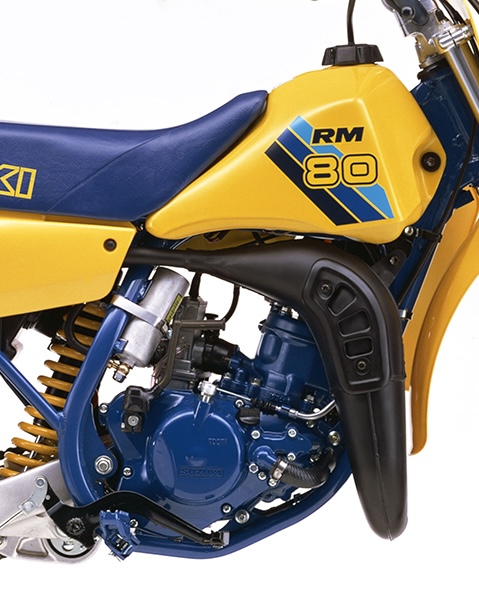 The RM’s redesigned 82cc mill was one of the most potent motors available in the 1986 mini division. It pulled well down low, barked in the middle, and revved out well on top. Riders of all skill levels praised its wide powerband and meaty midrange delivery. Photo Credit: Suzuki
The RM’s redesigned 82cc mill was one of the most potent motors available in the 1986 mini division. It pulled well down low, barked in the middle, and revved out well on top. Riders of all skill levels praised its wide powerband and meaty midrange delivery. Photo Credit: Suzuki
In terms of raw speed, Suzuki’s motor was one of the fastest in the 1986 mini class. Its powerband was not quite as wide as the brawny Honda’s mill, but in terms of outright power, it was a rocket. The CR hit harder down low and pulled a bit farther on top, but the Suzuki was more potent in the midrange. In terms of effectiveness on track, it was easily the second-best mini motor in the class. It was far easier to ride than the pipey Kawasaki and KTM minis and faster than the novice-friendly Yamaha. Riders of all skill levels praised its wide and easy-to-use powerband and experts loved its blistering midrange blast. The six-speed transmission was buttery smooth and never missed a shift and the clutch could withstand the abuse of most mini maniacs. After three years of eating roost from Kawasaki, Suzuki was back at the front with a winning mini motor package.
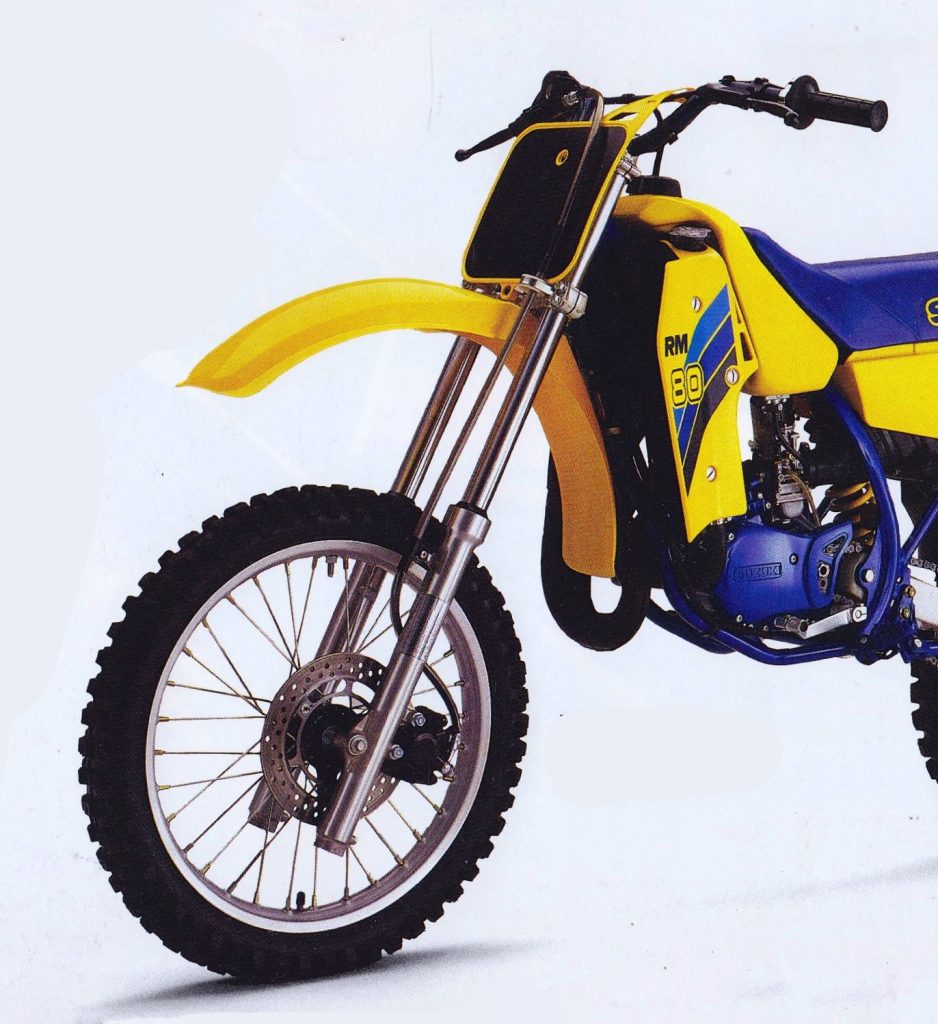 The RM’s new 33mm Showa forks were a big improvement over the ’85 model’s flexy 30mm silverware. Fast riders appreciated their firm stock settings, but some lighter and less skilled pilots found their action too stiff for comfort. Photo Credit: Suzuki
The RM’s new 33mm Showa forks were a big improvement over the ’85 model’s flexy 30mm silverware. Fast riders appreciated their firm stock settings, but some lighter and less skilled pilots found their action too stiff for comfort. Photo Credit: Suzuki
On the handling front, the RM80 was once again much improved over the outdated ’85 machine. The new beefier 33mm forks improved steering precision and flexed far less when pushed by faster and heavier riders. Cornering was not quite as sharp as the ultra-aggressive Honda, but the RM could toe the tight line when directed to do so. Stability was quite good as well with the new chassis providing a great balance between aggressiveness and comfort. Smaller riders found the new layout a bit of a stretch, but older kids loved the roomier feel and less cramped riding position. Jumping the RM was easy, and the yellow mini was a willing aerial partner. Its strong motor made large gaps a breeze to conquer, and its chassis never tried to loop out unexpectedly or do anything crazy to scare junior back to tee-ball and soccer. Overall, it was an excellent and well-rounded mini handling package.
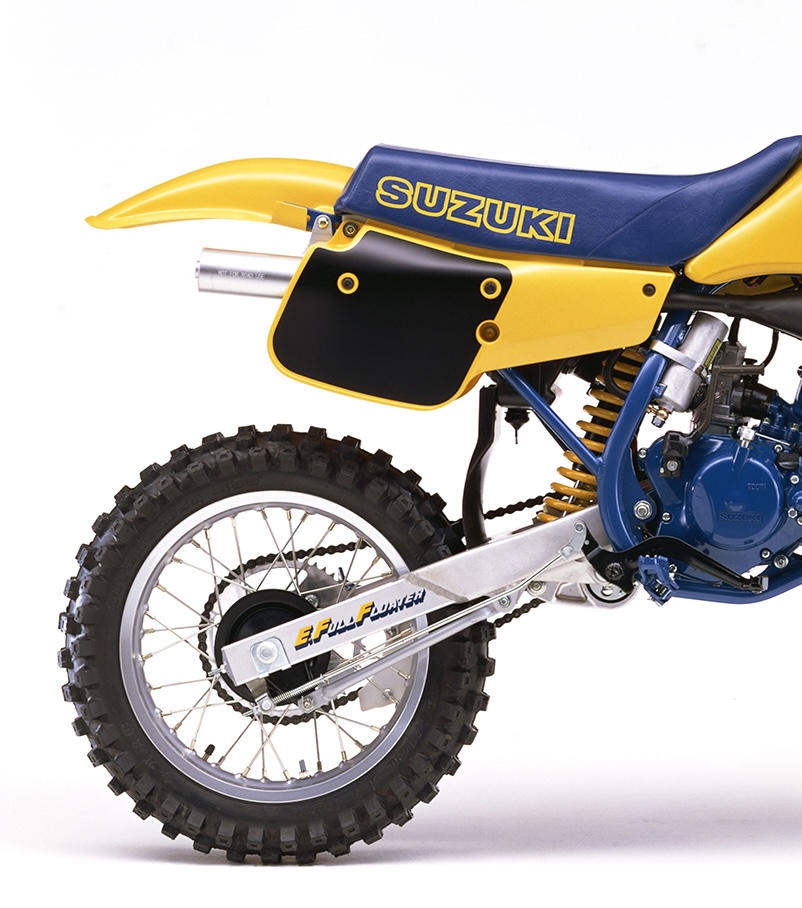 Like the forks, the RM’s redesigned Full Floater was set up for larger and more experienced riders. It worked very well when ridden aggressively but was not as effective at a more leisurely pace. Photo Credit: Suzuki
Like the forks, the RM’s redesigned Full Floater was set up for larger and more experienced riders. It worked very well when ridden aggressively but was not as effective at a more leisurely pace. Photo Credit: Suzuki
Like the motor and chassis changes, the suspension updates for 1986 shifted the RM80’s focus toward older and more experienced pilots. The new forks delivered a much firmer ride than in the past and were far happier when being pushed than cruising. Slower and lighter riders found them a bit harsh, but experts appreciated their ability to take big hits without a whimper. There was noticeably more flex than the Kawasaki’s new 35mm legs, but most testers felt the RM’s Showas delivered superior damping performance. They were not the best forks for a beginner, but if racing was your aim they were an excellent set of mini forks.
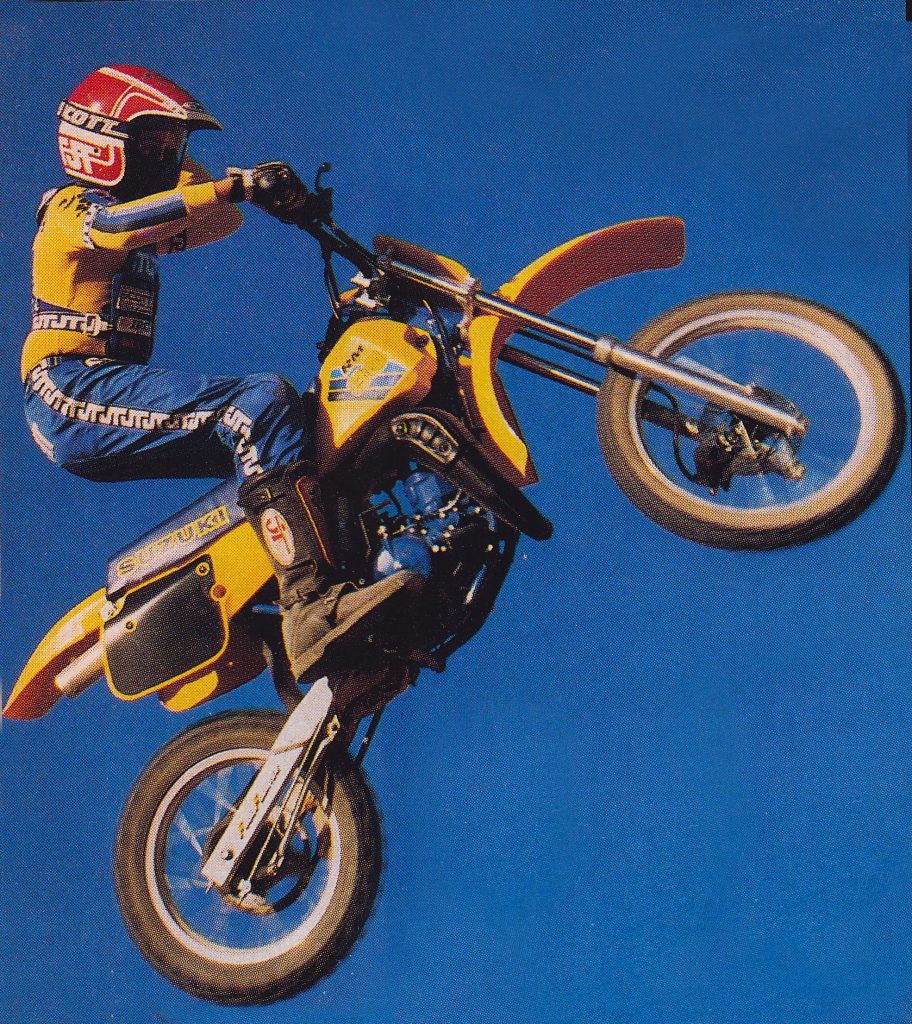 With its powerful motor, stout chassis, roomy ergos, and well-sorted suspension the all-new RM80 was one of the best leapers in the mini division. Photo Credit: Dirt Rider
With its powerful motor, stout chassis, roomy ergos, and well-sorted suspension the all-new RM80 was one of the best leapers in the mini division. Photo Credit: Dirt Rider
In the rear, things were a bit more complicated. Much like the forks, the all-new Full Floater was aimed at aggressive mini pilots. The stock spring rate and damping were tuned for larger and faster kids, and it worked very well when ridden at a full race pace. Fast mini experts like Mike Pascarella praised the action of the new Floater as it gobbled up big hits and serious jumps with ease. Less experienced riders found the damping of Suzuki’s rear end a bit heavy and complained about its stiff action. Interestingly, some of those complaints were probably the fault of the revamped linkage rather than the shock’s valving. The new eccentric cam linkage worked well when freshly serviced but that smooth action deteriorated quickly. The grease inside the linkage seemed to work its way out of the bearing very quickly and the result was a ton of stiction. This drag in the linkage affected the damper’s action and became quite noticeable if left unattended. As long as it was serviced constantly, it worked well, and most riders liked the new RM’s suspension package.
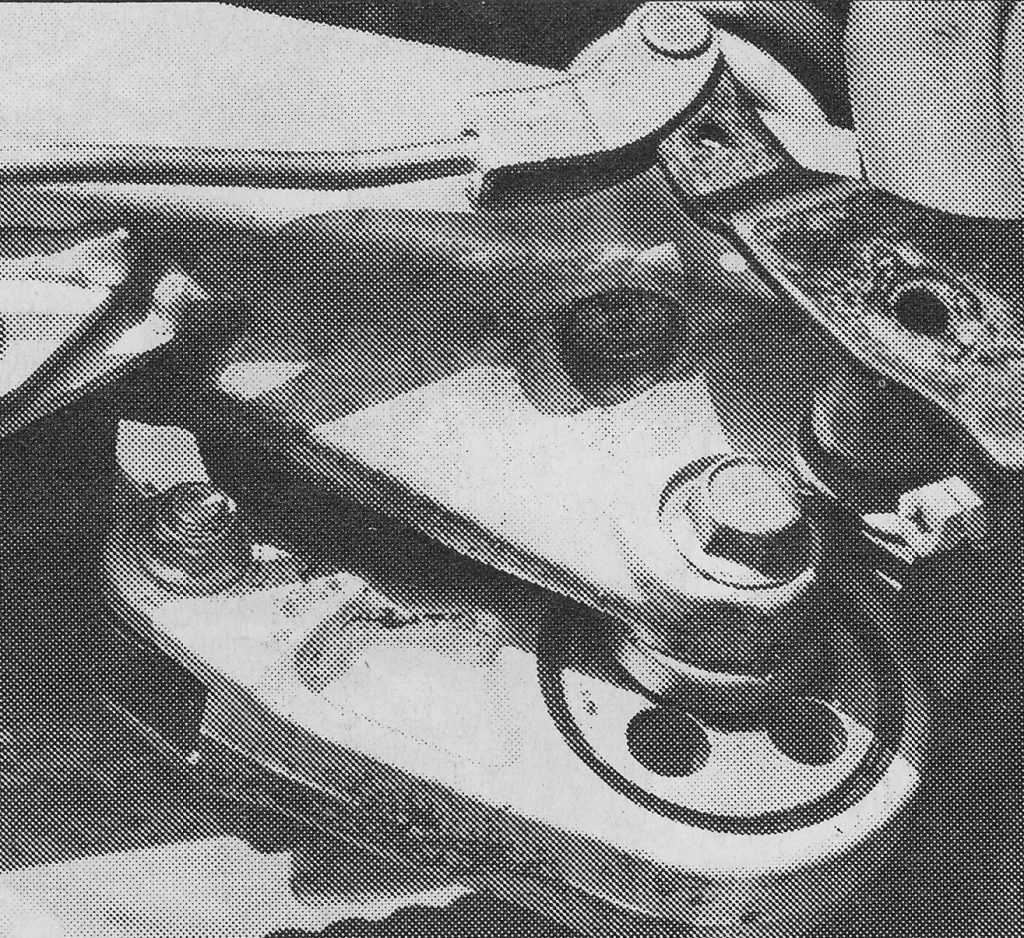 . While the new eccentric cam Full Floater worked well when new, its unique design suffered from a great deal of drag and required constant servicing to maintain smooth action. Photo Credit: Motocross Action
. While the new eccentric cam Full Floater worked well when new, its unique design suffered from a great deal of drag and required constant servicing to maintain smooth action. Photo Credit: Motocross Action
On the detailing front, the RM was pretty typical for its time. The new motor was very powerful when fresh, but those ponies disappeared quickly if you neglected the top end. Maintaining a strict service schedule was critical to keeping the high-strung motor purring. Without a power valve to service at least the motor was simple to pull apart and rebuild. The new frame was stout but aggressively ridden RM80s were known to suffer cracks with sustained hard use. It was a good idea to check the frame’s welds when servicing the grease-hungry linkage. The new front disc was not the most powerful in the class, but it was a tremendous improvement over the old bike’s front drum. Swapping the stock plastic line for a braided steel alternative made a noticeable improvement in power and feel for hard chargers who needed more bite out of the front binder. The rear drum was not a standout, but it got the job done for most mini pilots. Cost cutting was obvious in the flimsy stock chain, steel shifter, steel rear brake lever, and wimpy stock bars. The stock air filter worked well when new but came apart at the seams with multiple cleanings. It was a good idea to upgrade to a Uni or Twin Air filter once the stocker started to fray.
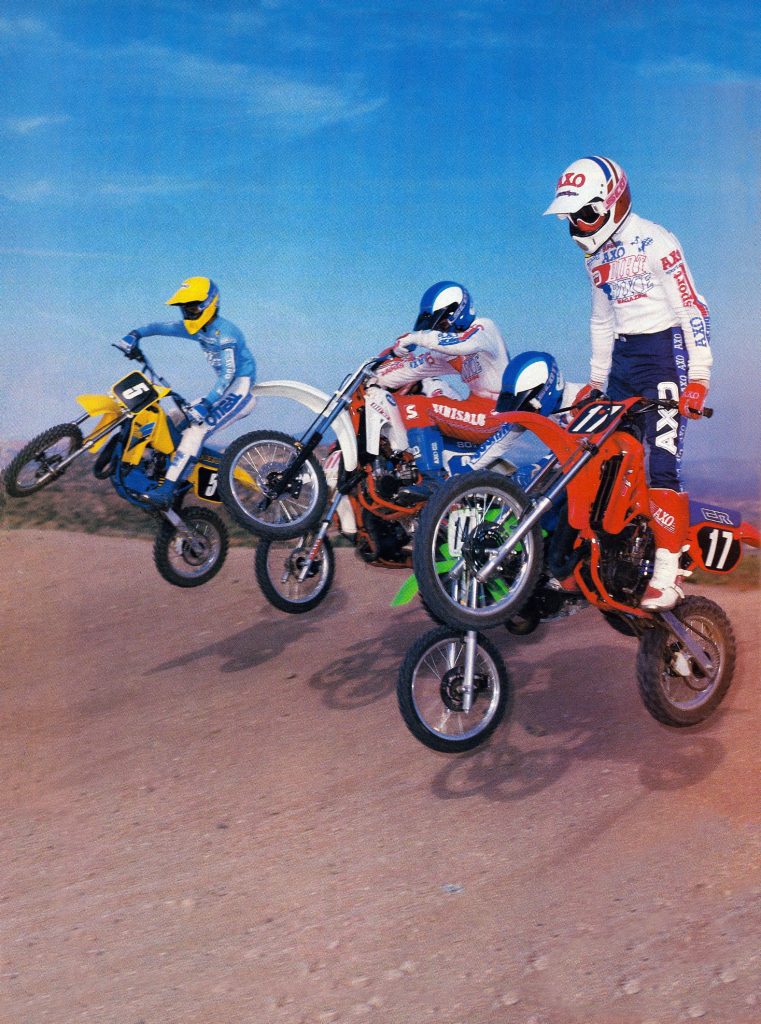 In 1986, Honda’s rocket-fast CR80R was the pick of the litter for most hard-charging mini pilots, but the new RM80 was a close second in the mind of most testers. Photo Credit: Dirt Bike.
In 1986, Honda’s rocket-fast CR80R was the pick of the litter for most hard-charging mini pilots, but the new RM80 was a close second in the mind of most testers. Photo Credit: Dirt Bike.
Most riders liked the RM’s new looks and dug the roomier layout. The plastic fit well and the bright blue motor made the RM stand out on the track. The tall and flat seat made it easy to move around and the bodywork was a great fit for larger kids. Small riders fit better on Yamaha’s YZ80, but many testers proclaimed it to be the most comfortable of ’86 minis.
 In 1986, Suzuki revamped their entire motocross lineup to very mixed results. The RM125 and RM250 turned out to be massive disappointments, but the new RM80 proved to be a winner. Photo Credit: Suzuki
In 1986, Suzuki revamped their entire motocross lineup to very mixed results. The RM125 and RM250 turned out to be massive disappointments, but the new RM80 proved to be a winner. Photo Credit: Suzuki
Overall, the 1986 Suzuki RM80 proved to be a major upgrade for Suzuki’s mini program. The all-new yellow and blue mini was right-sized for the larger and older mini pilots finding themselves in the 80 division. It gave younger kids room to grow and older kids enough room to squeeze out one more season before moving to the 125s. The all-new long-stroke motor was a rocket, and the suspension enabled the next Mike Healey to launch the RM into the stratosphere without fear. It was fast, well-suspended, and handled well; everything a growing boy or girl needed in 1986 to take them to the top.

